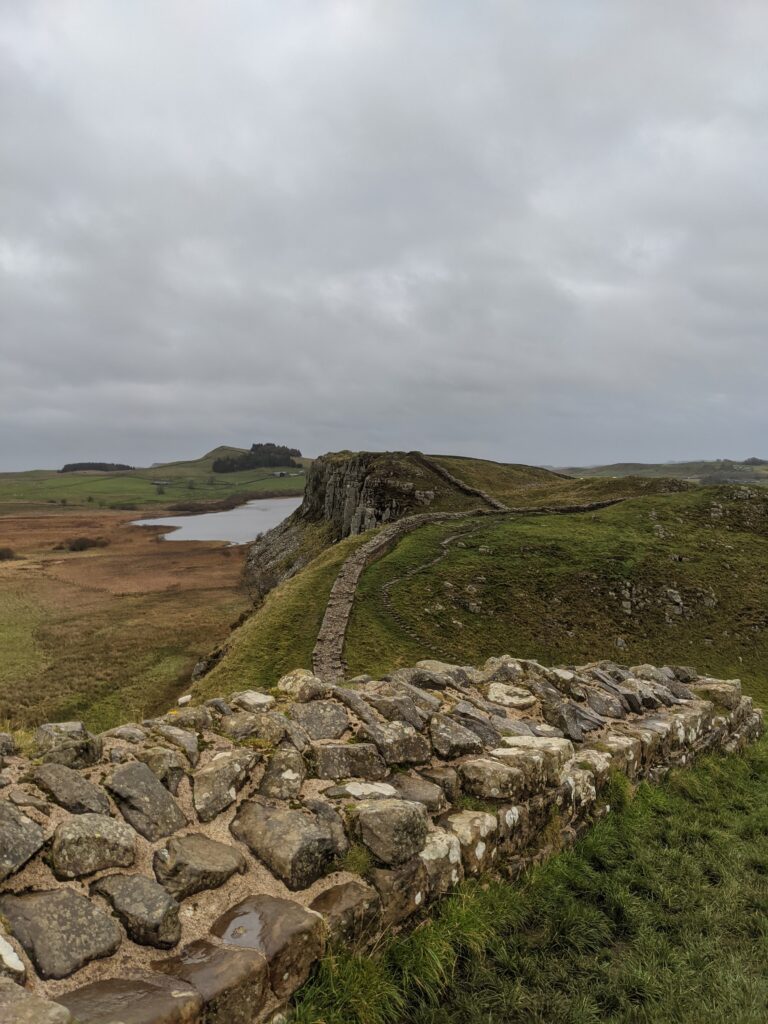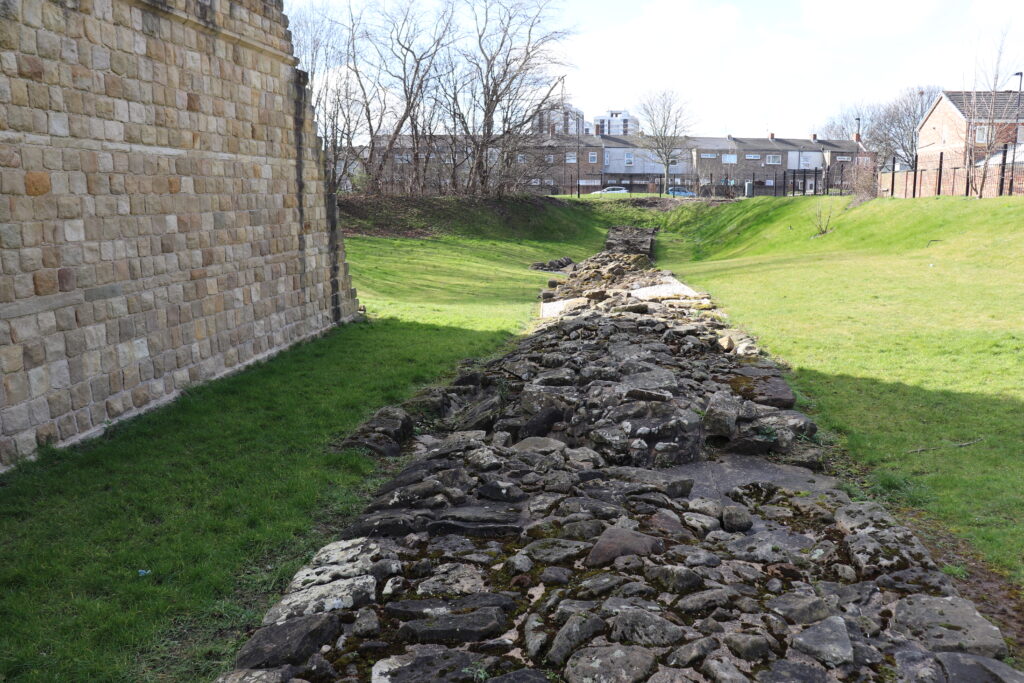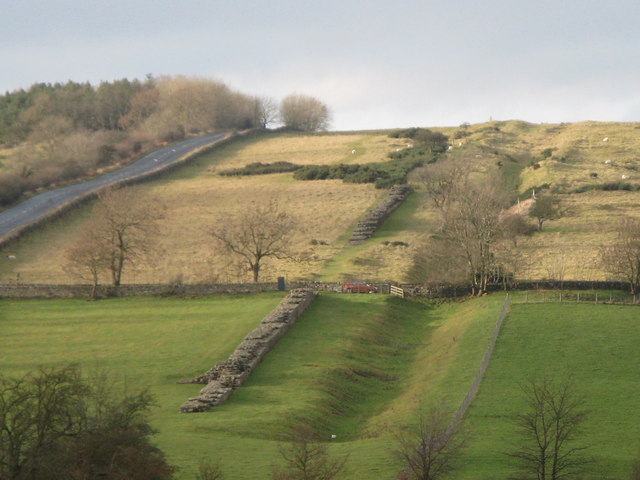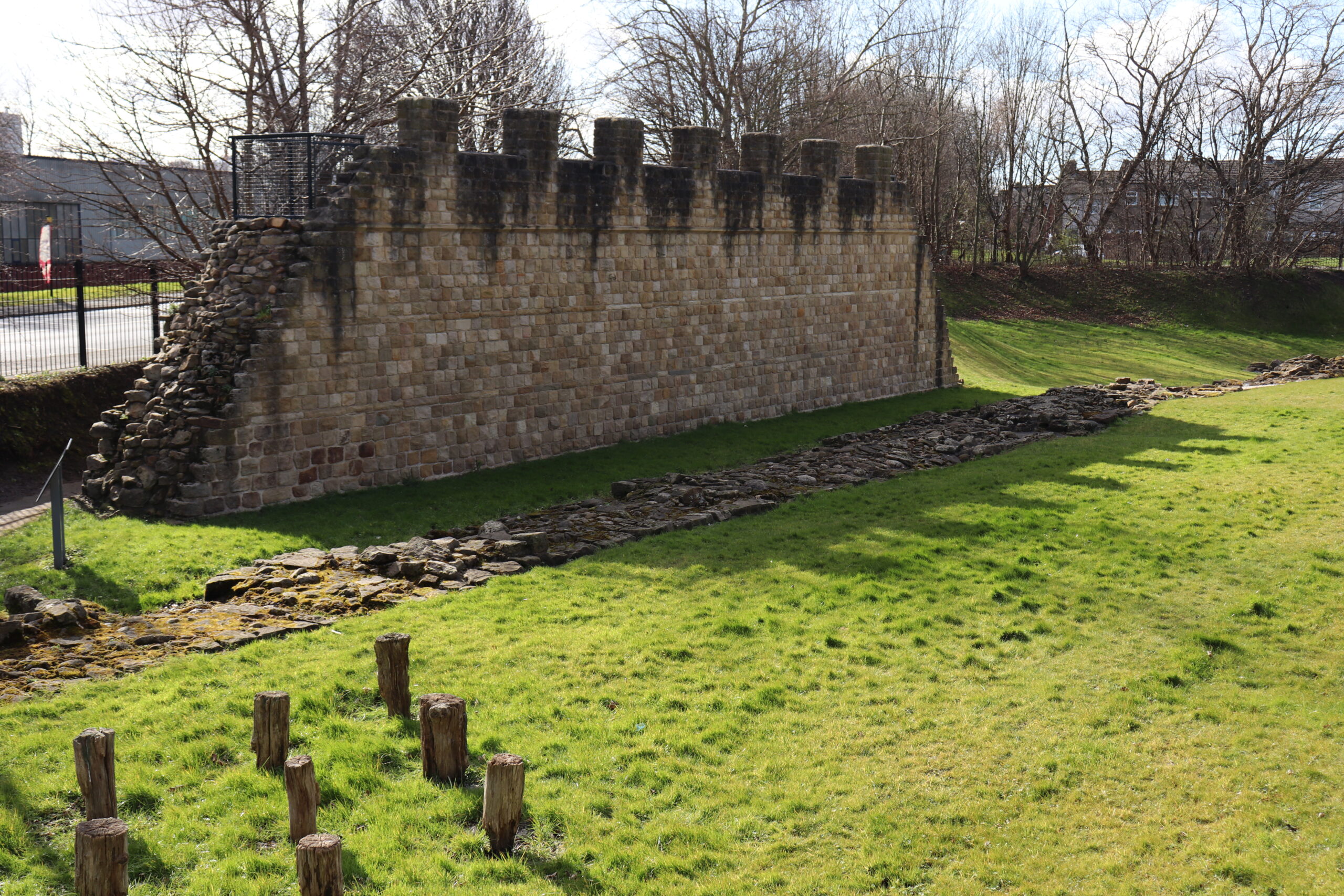This blog explores what one of the most famous walls in the UK might have looked like when it was first built. In order to explore this subject, I visited Hadrian’s Wall not far from Black Carts Turret. We’re going to look at the construction of the wall, and its elements and tell a few stories.
There are two different theories about the construction of Hadrian’s Wall. That it was started in AD120 and took about 3-4 years to complete, with a British war falling in between those years. The second theory is that it was started around AD122 and was completed around AD128.

Under the first theory, it was suggested that only around 3,000 to 5,000 soldiers worked on the wall because the legionaries would have had other jobs around Britain. They were perhaps involved in the construction of public buildings around Britain as well as the wall itself. The second, and more commonly held theory is that the wall was built by 15,000 soldiers – three legions, the second, sixth and 20th legion, all up here in Northern Britain.
Personally, I err more towards the first theory but it all comes down to which archaeologists you study and what the evidence each one found suggests.
When we look at the construction of Hadrian’s Wall, it wasn’t the same all the way along the wall. It had different widths and different construction methods depending on where along the wall you are. The broad wall is seen more commonly on the east side of Hadrian’s Wall – about 2.8m wide – and the narrow wall, common throughout the central section – about 2.27m wide. The narrow-gauge wall can also be found from Newcastle out towards Segedunum. From wall mile 49 onwards to wall mile 80, it was originally built as a turf wall, which would have had a 6m base with an estimated 3.5m of height with a wooden palisade in front of it.

There were also around 240 structures built into the wall, things like milecastles, turrets and bridges. In total, 3.7 million tonnes of stone were estimated to have been used in the construction of the wall. That gives us a sense of how huge this construction project was.
Over the course of time, the wall was altered and edited. By the time of Marcus Aurelius, the wall had been fully upgraded to stone and was constantly repaired and added to over time. Emperors like Septimius Severus repaired the wall during his time and the soldiers stationed along the wall would have altered the construction to make it work for them throughout the Roman period.
In the post-Roman period, we saw a lot of the wall being used in the Dark Ages by native or Romano Britons as these people would have seen themselves as Roman too.
The wall components
The berm, close to Black Carts turret, would have been about 6m side and around 2m high. As you came from the north, towards the wall, you’d have to get over this earthen mound before you even got to the wall itself.
Next comes the wall ditch – a V-shaped ditch that would have been around 8m wide and 2.7m deep and would have been quite a barrier to getting to the wall. Over time, the ditch here has collapsed in on itself but it’s still clear to see the shape of the ditch dug by the Romans.

(Mike Quinn / Hadrian’s Wall and the north defensive ditch between Black Carts and Limestone Corner / CC BY-SA 2.0)
And now we’re at the wall itself. It would have been around 4-6m high, stone-built wall. The front face of the wall would have been Roman dressed stone and it would have looked beautiful and impressive from the outside. When they built the façade, they would then have the core of the wall made of boulders with clay poured in over the top to finish the wall. If you see the wall today, it’s been consolidated – an archaeological term meaning repaired. It’s been rebuilt by historians and archaeologists so we can enjoy Hadrian’s Wall and get a feel of how it might have looked all those hundreds of years ago – although some of the repairs have been done with modern construction materials like concrete so it’s not exactly how the Romans would have done it.
There are theories that the wall would have been whitewashed because there is evidence of plaster, whitewash and paint discovered. That would make it visible from quite a distance.

At the back of the wall there would also be a layer of wonderful, dressed stone too. Over the course of time, parts of the wall would have fallen in some locations and get damaged and need to be repaired. Where this has happened, there is evidence of limestone mortar being used to make those repairs.
Along the top of the wall, it’s thought there would have been battlements or crenelations – these assumptions have been made after looking at artwork made from other installations across Europe.
There may have been a walkway across the top of the wall which would allow the soldiers to move between the various turrets, milecastles and forts all the way along.
Around 18m behind the wall, although in some locations it’s much further, there would have been the Vallum. The Vallum was 35m wide and would be stationed behind another berm. The Vallum was a steep-faced, flat-bottomed ditch which dropped 5m down from the berm. Anyone entering the Vallum would then be faced with another 2m berm on the other side, making a 5m traverse. This is the point at which I think most people would have been stopped in their tracks. At which point the Roman soldiers would quickly dispose of the intruder or leave them in the ditch to die.
Some believe that the Vallum’s purpose was to mark where the military-controlled zone was, but also to keep any rebelling northern Britons in their place.
All of the elements I’ve talked about above come together to create an incredible frontier that we know as a UNESCO World Heritage site today. It was incredibly successful and formidable and why it has claimed its spot as a really important part in the history of the defences of Roman Britain.




